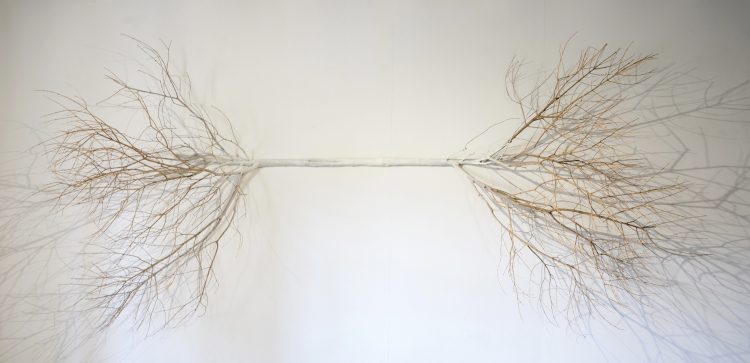Are European Universities Building Alliances as Rhizomes?
24 Feb 2021|Maia Chankseliani
- Research

What do ginger plants, Kafka’s writing, the world wide web, and European university alliances have in common? Hardly anything in substance, but everything in form: they are all rhizomes. Rhizomes are generally found in our gardens: bamboos, asparagus, lilies of the valley. The term rhizome originates in botany and describes plant stems which grow horizontally and produce roots or leaves. The characteristics of a rhizome inspired Gilles Deleuze and Felix Guattari to create a philosophical concept that describes interconnected heterogeneous elements. The concept is first deployed in the world of Franz Kafka. A rhizome is the multiple approaches that can be used to explore the depths of Kafka’s work. The hotel in Amerika or the castle in the eponymous novel both have multiple entrances through which the protagonist and the reader may enter. It hardly matters which entry point is the actual entrance. What is at stake is the itinerary, where the chosen entrance leads, and what might be encountered on the way. A rhizome is a cartography, a map of point A to point B that also crosses the paths of other points. Like the ginger plant, new rhizomes stem from point A and from point B and create other paths, other encounters. As a cartography, the rhizome is a network of sorts. The concept has been widely used in order to discuss other networks such as the world wide web: an immense cartography of interconnected heterogeneous elements, which can be entered/accessed through a multiplicity of doors/pages.
Rhizomes can be used in order to address a variety of real-world networks. The European Universities Initiative is the EU’s newest higher education programme. Launched in 2019, this initiative is directed towards encouraging higher education institutions in Europe to form alliances. These alliances are bottom-up networks of universities across multiple countries of the EU and those participating in Erasmus+, including Turkey, Norway, Iceland, Serbia, and until recently the UK. These alliances are intended to embody the future of European higher education with the ambitious objective of formalising some twenty European Universities by 2024. Hence, our interest in studying them.
When we started exploring this initiative, a few words stood out in the way this project was defined: alliances, bottom-up, and networks. Alliances imply connections. Bottom-up suggests that instead of imposing a framework, the European Commission is fostering a horizontal relationship with participating universities. As networks, the alliances become a cartography that can be entered through various paths: institutions, people, concepts. The image of the rhizome surfaced. Deleuze and Guattari themselves consider that a rhizome is an “alliance, uniquely alliance”.
Alliances are found throughout a variety of domains. We encounter strategic alliances in organisational studies, formed for the mutual benefit of participating organizations. Alliances are also found in parliamentary democracies, where parties negotiate coalitions in order to govern and exercise power. Perhaps the oldest and most well-known form of an alliance is a military alliance. Think about The Iliad in which the reader witnesses the difficulty of holding on to the Archaean’s coalition against Troy. Despite this cohesive difficulty, military alliances are built on trust and a common identity.
What does a university alliance entail? University alliances are found at the intersection of all of these definitions. Higher education institutions develop collaborations which are mutually beneficial. Outcomes can range from knowledge exchange to increased international visibility. The processes and nature of collaborations are the result of negotiations. Trust is at the core of university alliances, and it is through this trust that a common identity can be developed.
We use the concept of rhizome to study the newly-established European University alliances. It is the rhizome’s capacity to build cartographies that reveal how European University alliances are created from the bottom-up. The European Commission has decided to trust its higher education institutions, to test and experiment what universities of the future will look like. Alliances will build and strengthen partnerships between Eastern, Western, Northern, and Southern Europe. The European University alliances have been built on prior academic or research partnerships such as the League of European Research Universities or the COIMBRA group. University alliances, like a ginger plant, stem from multiple different points to build networks. These networks are not an end in itself. New connections can emerge from the alliances. Partnerships with NGOs, city councils, and private companies create new multi-stakeholder networks.
These networks rely on the processes of experimentation between participating institutions and individuals, to produce a cartography of innovative collaborations: governance structures, common programmes, transdisciplinary research. The framework of the regional university alliances is novel, and the concept of rhizome helps to grasp the experimental dynamics in creating the future of the European higher education. The role of these universities is to foster a new generation of Europeans citizens. Students will have extensive opportunities of mobility and immersion in European culture, shaping their European identity and solidarity. Our ongoing study observes this innovative supranational initiative and its influence on the formation of European students and re-formation of the idea of University.
Both authors are affiliated with St Edmund Hall and Comparative and International Education Research Group at the Department of Education
Category: Research
Author

Maia
Chankseliani
Maia Chankseliani is Professor of Comparative and International Education at the University of Oxford, where she leads the Comparative and International Education Research Group and serves as a Governing Body Fellow of St Edmund Hall.